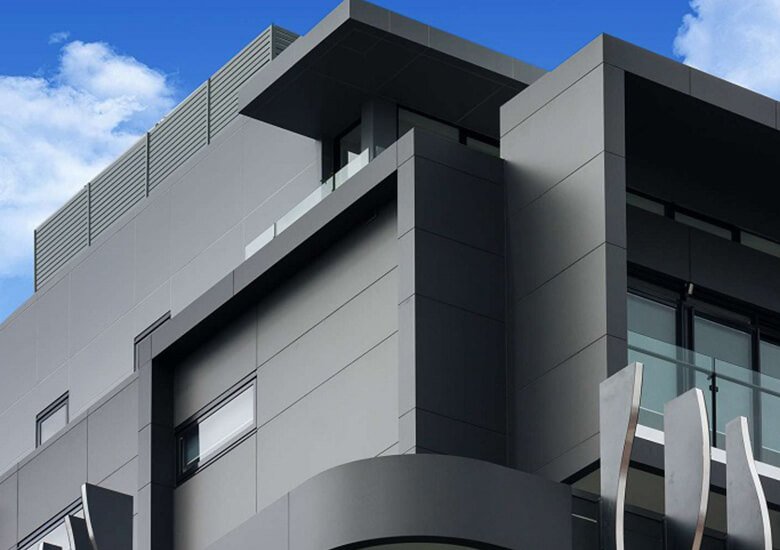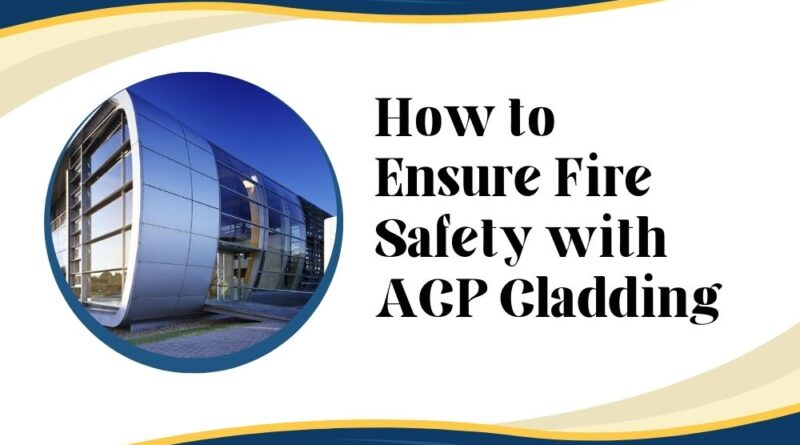How to Ensure Fire Safety with ACP Cladding
Aluminum Composite Panel (ACP) cladding is widely used in modern construction due to its sleek appearance, durability, and affordability. However, when it comes to fire safety, there have been concerns about the use of ACP cladding, especially in high-rise buildings. Ensuring fire safety with ACP cladding is essential for both residential and commercial properties. In this blog, we will discuss practical steps and key considerations for making sure that your ACP cladding installation is fire-safe and meets regulatory standards.
What Is ACP Cladding and Why Fire Safety Is a Concern
Understanding ACP Cladding
ACP cladding consists of two thin layers of aluminum bonded to a non-aluminum core, usually made from polyethylene or other materials. It’s popular because it’s lightweight, easy to install, and can be customized to fit various design preferences. Many architects and developers prefer ACP cladding because of its modern look and its ability to provide a weather-resistant facade for buildings.
The Fire Safety Concern
While ACP cladding has many benefits, certain types of ACP panels with polyethylene cores have been linked to fire incidents. The main concern arises when these panels are not fire-resistant and act as fuel during a fire, allowing it to spread rapidly. Some high-profile fire accidents have raised questions about the fire safety of buildings that use ACP cladding, which is why it’s critical to ensure that proper fire safety measures are taken.
Note – Ensure your building’s safety and aesthetics with ACP cladding Dubai solutions from Altayyebneon. Contact today to explore high-quality, fire-resistant options tailored to your project needs and elevate your construction standards!
Choosing Fire-Resistant ACP Panels
Opt for Fire-Retardant Materials
One of the most effective ways to ensure fire safety with ACP cladding is to choose panels made from fire-retardant materials. Instead of using standard polyethylene cores, opt for panels that have a mineral-filled core. These fire-retardant cores are designed to slow down the spread of flames and significantly reduce the risk of fire escalation.
There are various grades of fire-resistant ACP cladding available, and it’s important to select the one that meets your local fire safety regulations. Look for products that are certified as fire-resistant, as they are tested to meet specific safety standards. By making this simple choice during the selection process, you can greatly enhance the fire safety of your building.
Ensure Proper Certification and Testing
When choosing ACP panels, always check for certifications and test reports from reliable authorities. Fire-retardant panels should be tested under strict conditions to ensure that they meet safety standards. Certifications like Euroclass or NFPA can give you confidence that the panels are suitable for use in buildings where fire safety is a priority.
Proper Installation to Prevent Fire Hazards

Follow Building Codes and Regulations
Fire safety isn’t just about choosing the right materials; proper installation is equally important. One of the best ways to ensure fire safety with ACP cladding is to follow local building codes and fire safety regulations during installation. These codes are designed to minimize fire risks and protect the building’s occupants.
Building regulations often specify the types of materials that can be used, how they should be installed, and the measures that must be in place to control the spread of fire. Always work with experienced contractors who are familiar with fire safety guidelines and can ensure that your ACP cladding is installed properly.
Create Fire Breaks
Fire breaks, also known as fire stops or cavity barriers, are essential for preventing the spread of fire in buildings with ACP cladding. Fire breaks are physical barriers installed within the cladding system that help to slow down or stop the progress of flames in case of a fire.
These barriers can be placed between floors or around specific areas of the building to ensure that if a fire does start, it doesn’t quickly spread from one section to another. Installing fire breaks is a critical step in ensuring the fire safety of any building with ACP cladding, and it should always be part of the installation plan.
Pay Attention to Joints and Sealing
The joints between ACP panels can be potential weak spots for fire penetration. To ensure that these areas are properly protected, it’s important to use fire-resistant sealants and materials in the joints. These sealants can help prevent the spread of flames through the gaps between panels, offering an extra layer of protection. Properly sealed joints and well-designed panel connections will reduce fire hazards and help contain fires more effectively.
Regular Maintenance and Fire Safety Inspections
Conduct Routine Inspections
Even after the installation of ACP cladding, fire safety should remain a top priority. Regular maintenance and inspections are necessary to ensure that the cladding system remains in good condition. Over time, damage to the panels, joints, or fire breaks may occur, which can increase the risk of fire hazards.
It’s recommended to conduct routine fire safety inspections at least once a year, especially if your building is located in a high-risk area. These inspections should include checking for damaged panels, ensuring fire breaks are intact, and verifying that all fire-resistant materials are still in place.
Stay Updated with Fire Safety Regulations
Fire safety regulations and building codes can change over time. It’s important to stay informed about any updates to fire safety standards, especially those that relate to cladding materials and installation procedures. Regularly reviewing your building’s fire safety measures will ensure that you remain compliant with the latest safety guidelines and continue to protect the building and its occupants.
Additional Safety Measures for High-Rise Buildings
Consider Fire Alarm and Sprinkler Systems
For buildings, particularly high-rise structures, it’s critical to combine ACP cladding with other fire safety systems. Installing high-quality fire alarms and sprinkler systems is an additional layer of protection that can significantly reduce fire risks. In the event of a fire, these systems can help to quickly alert occupants and control the spread of flames before they become unmanageable.
Implement Evacuation Plans
While focusing on fire-resistant materials and proper installation is essential, having a well-practiced evacuation plan is just as important. Ensure that the building has clear evacuation routes and that occupants are familiar with these procedures. High-rise buildings especially need to have marked exit points and fire drills should be conducted regularly to ensure everyone knows what to do in case of an emergency.
Conclusion
Fire safety is a crucial consideration when using ACP cladding in any building project. By choosing fire-resistant materials, ensuring proper installation, and maintaining regular inspections, you can greatly reduce the risk of fire-related accidents. Additionally, combining these measures with fire alarms, sprinklers, and evacuation plans ensures that you create a safe environment for everyone in the building.
Making informed decisions at every stage, from material selection to post-installation maintenance, is the key to ensuring fire safety with ACP cladding. Stay updated with the latest regulations and work with experienced professionals to protect your building and its occupants.
For more insightful articles related to this topic, feel free to visit techybusinesses.com

